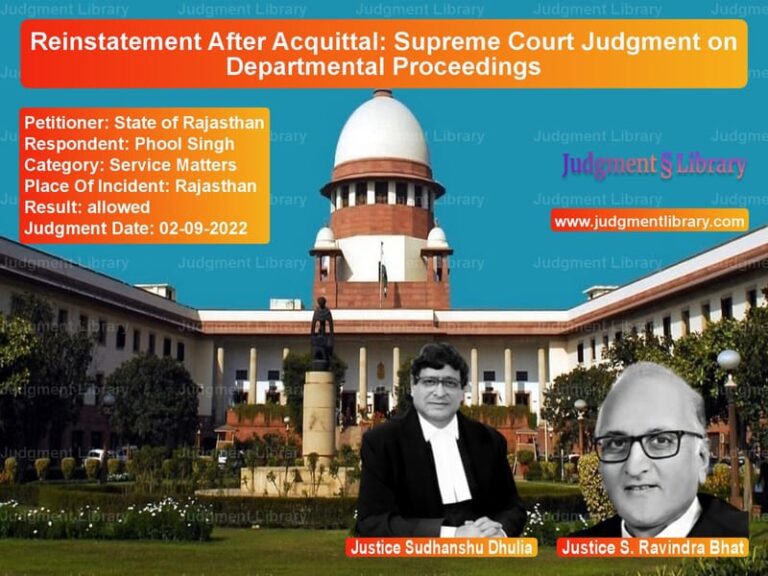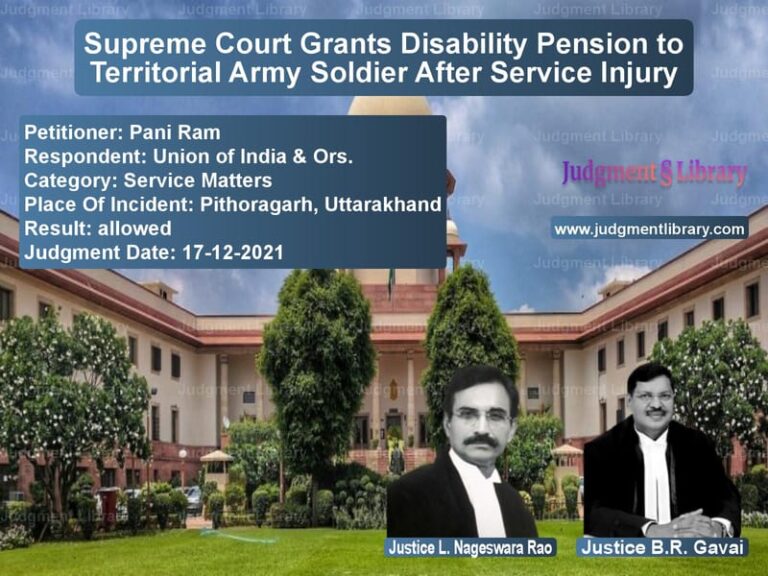Supreme Court Directs Time-Bound Process for High Court Judge Appointments
The case of M/s. PLR Projects Pvt. Ltd. vs. Mahanadi Coalfields Ltd. & Others sheds light on the ongoing crisis in judicial appointments in India. With nearly 40% vacancies in High Courts and certain courts functioning at less than 50% capacity, the Supreme Court has intervened to establish a structured, time-bound process for filling judicial vacancies.
Background of the Case
The matter reached the Supreme Court through a transfer petition, but the broader issue involved the judicial appointment backlog in High Courts. The case highlighted how prolonged judicial vacancies negatively impact the justice system, causing delays and hampering citizens’ right to a fair trial.
Judicial Vacancy Statistics
During the proceedings, the Attorney General presented an overview of judicial appointments:
- Total sanctioned strength of High Court judges: 1080
- Number of appointed judges: 664
- Total vacancies: 416
- Pending recommendations with the government: 196
- Recommendations yet to be received: 220
These statistics underscored the urgent need for systematic reforms.
Petitioners’ Arguments
The petitioners argued:
- The judicial system is facing an unprecedented crisis due to high vacancy rates.
- Many High Courts are operating at less than 50% strength, leading to case backlogs and delayed justice.
- Appointments should follow a fixed timeline to ensure vacancies are filled without undue delays.
- The lack of a structured approach to judicial appointments is affecting citizens’ fundamental right to speedy justice under Article 21 of the Constitution.
Respondents’ Arguments
The Union of India and the Attorney General submitted:
- The appointment process is complex and involves multiple stakeholders, including High Court Collegiums, the Supreme Court Collegium, and the Central Government.
- Some High Courts delay sending recommendations, which causes a cascading effect on appointments.
- There is no legal requirement for a fixed timeline, as judicial appointments depend on multiple factors, including background checks.
Supreme Court’s Findings
The Supreme Court, comprising Chief Justice S.A. Bobde and Justices Sanjay Kishan Kaul and Surya Kant, observed that:
1. Judicial Vacancies Pose a Severe Crisis
The Court acknowledged that the current backlog and vacancies had created a crisis, emphasizing that High Courts must function at full strength to ensure efficient justice delivery.
2. Chief Justices Must Recommend Names on Time
The Court directed Chief Justices of High Courts to proactively recommend names for judicial appointments at least six months in advance before a vacancy arises.
3. No Need to Wait for Pending Recommendations
The Court noted that some High Courts hesitate to recommend names when earlier recommendations are still pending. It clarified that new recommendations should not be delayed due to previous pending lists.
4. Pending Recommendations Must Be Processed Faster
The Attorney General confirmed that there were 45 recommendations pending for over six months with the government, which had now reached the Supreme Court Collegium. Additionally, six names had been reiterated twice by the Collegium but were still awaiting appointment.
5. Implementation of a Time-Bound Appointment Process
To streamline appointments, the Supreme Court set the following timeline for processing recommendations:
- The Intelligence Bureau (IB) must complete its verification and submit a report within 4-6 weeks of receiving a recommendation.
- The Central Government must forward the file to the Supreme Court within 8-12 weeks after receiving views from the State Government and the IB report.
- After receiving the Supreme Court Collegium’s recommendation, the Central Government must complete the appointment process within 3-4 weeks.
- If the Collegium reiterates a candidate’s name, the appointment must be made within 4 weeks.
Judgment and Conclusion
The Supreme Court stated:
“We are conscious that the appointment process is collaborative in nature, and we expect promptness at every stage to facilitate the larger cause of timely justice.”
With this ruling, the Court established a structured mechanism to accelerate judicial appointments, ensuring that pending vacancies are filled without unnecessary delays.
Petitioner Name: M/s. PLR Projects Pvt. Ltd..Respondent Name: Mahanadi Coalfields Ltd. & Others.Judgment By: Justice S.A. Bobde, Justice Sanjay Kishan Kaul, Justice Surya Kant.Place Of Incident: India.Judgment Date: 20-04-2021.
Don’t miss out on the full details! Download the complete judgment in PDF format below and gain valuable insights instantly!
Download Judgment: ms.-plr-projects-pv-vs-mahanadi-coalfields-supreme-court-of-india-judgment-dated-20-04-2021.pdf
Directly Download Judgment: Directly download this Judgment
See all petitions in Fundamental Rights
See all petitions in Public Interest Litigation
See all petitions in Constitution Interpretation
See all petitions in Judgment by S. A. Bobde
See all petitions in Judgment by Sanjay Kishan Kaul
See all petitions in Judgment by Surya Kant
See all petitions in allowed
See all petitions in supreme court of India judgments April 2021
See all petitions in 2021 judgments
See all posts in Constitutional Cases Category
See all allowed petitions in Constitutional Cases Category
See all Dismissed petitions in Constitutional Cases Category
See all partially allowed petitions in Constitutional Cases Category







